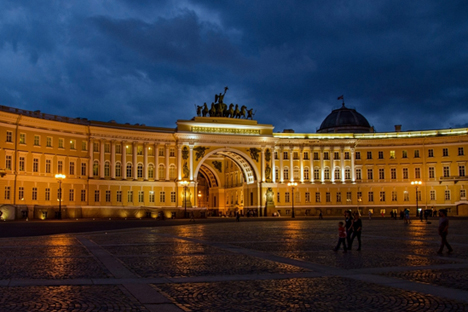Highlights of St. Petersburg’s Cultural Forum

The Fourth International Cultural Forum to be held December 14-16.
Press photo1. The exhibition “Catherine the Great and Stanislaw August: Two enlightened rulers” at the State Hermitage Museum
This is an exhibition-dialogue between two art collections, which were gathered during the same time period, in the second half of the 18th century, by two monarchs, Catherine the Great in St. Petersburg and the last Polish king Stanislaw August Poniatowski for his palace in Łazienki (today a part of Warsaw).
The latter collection suffered an especially tragic fate; the collection began to disintegrate during the life of the king and, after his death, it was fully sold off. Part of it then fell into the collections of Russian tsars and nobles, and the rest was scattered around the world. Both imperial tastes were similar, and that is why at the exhibition displays are almost all the masterpieces of European art of the 16th-18th centuries, from Rembrandt to Fragonard.
(Participants and guests at the Forum can visit the museum free of charge on December 14.)
2. The play “Tolstoy’s War and Peace” in the Tovstonogov Bolshoi Drama Theatre
(December 14.)
The main drama theatre of the northern capital timed the premiere of this play-guidebook, based on the Russian classic novel, for the opening of the Forum. It is being put on by the famous director Victor Ryzhakov, whose works on the stage of the Chekhov Moscow Art Theatre have travelled over half the world.
According to the director, “the stage version of the novel is not a literal retelling, or a graphic illustration of text. After all, the scale of Tolstoy’s novel is not measured by the number of pages, but by the volume of the characters, and the deep understanding of peoples’ destinies.”
This show is a kind of tour through the individual chapters of the novel, where the role of “guide” is played by the legendary Russian actress Alisa Freindlich.
3. Feeling of Line Ballet in memory of Louis XIV: Baroque ballet at the Hermitage Theatre
(December 16)
This is Russia’s first experience of a professional reconstruction of an authentic baroque ballet as an independent stage event, organised by the greatest baroque dance specialist, the German director Klaus Abromeit. The costumes were created by St. Petersburg artist Larisa Pogoretskaya, based on sketches of typical theatrical costumes worn by actors during the reign of the Sun King.
The program will include Baroque dances in the Italian (“comic”) tradition; ballet to music by the Russian court composer of the middle 18th century Domenico Dall'Oglio, and a suite of noble French dances based on the works of choreographer Raoul Feuillet.
4. Symphony Orchestra Concert in the Great Hall of the St Petersburg State Capella
(December 16)
This concert is dedicated to two musical geniuses; Pyotr Tchaikovsky and Antonin Dvorak. The programme comprises their congenial works; the Concerto for Violin and Orchestra composed in 1878 by the Russian composer, and the Eighth Symphony of the famous Czech. Conducting the orchestra will be Ilya Derbilov, and appearing together on the stage with the Capella Orchestra will be South Korean violinist Jiyeon Ryu.
5. Retrospective of Pavel Fedotov at the Russian Museum
For an introduction to classical Russian painting of the 19th century, a visit to the Russian Museum is a must. Celebrating his 200th birth anniversary is a retrospective of one of the founders of critical realism: Pavel Fedotov.
In Fedotov’s art can be found all the canons, all the major genres, which prevailed in Russian and European paintings of 18th-19th centuries; from landscape and genre scenes to battle pieces and still lifes. However, the genres can be misleading, and present the artist in planer salon form. There are two epithets usually associated with his name; the “Gogol of paintings” and the “forerunner of Degas”.
(Forum participants and guests can visit the museum free of charge on December 14 and 16.)
All rights reserved by Rossiyskaya Gazeta.
Subscribe
to our newsletter!
Get the week's best stories straight to your inbox